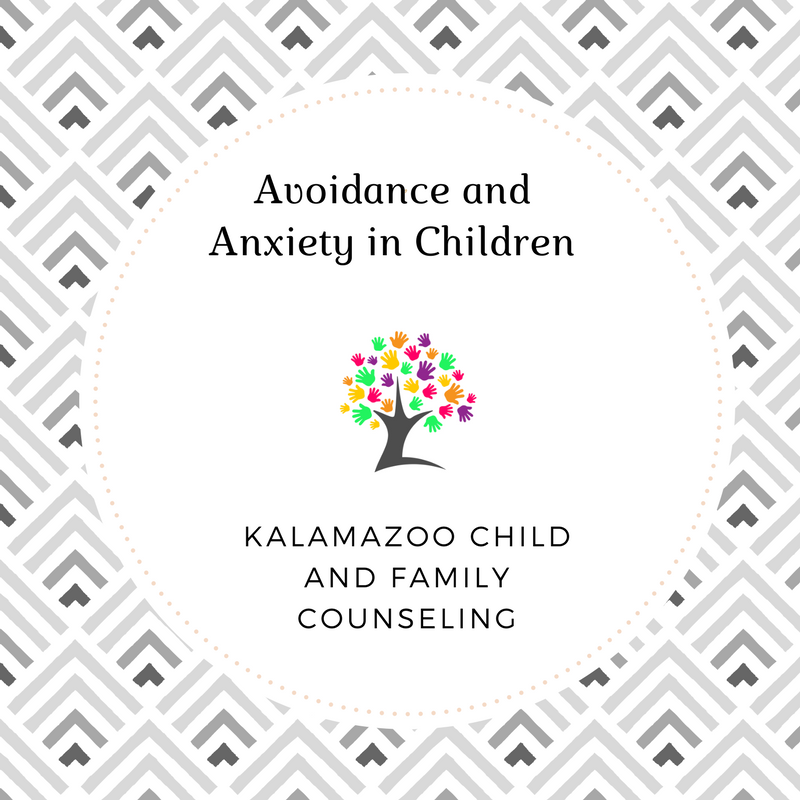
Avoidance and Anxiety in Children
Avoidance is one of the biggest culprits in the maintenance of anxiety in children. Avoidance is directly connected to the fight or flight response each one of us have. If you’re the parent of an anxious child, helping your child feel calm and safe seems like a job that never ends. You go through great lengths planning and preparing, and offering reassurance so that your son or daughter don’t experience panic. After all, fixing problems, and making kids feel better is fundamental to being a parent. The feeling you get in the pit of your stomach when your child feels fear is wrenching. No parent wants to see their child in distress. Whether it’s their panic of giving a speech in front of class, or having to memorize their line in the school play the urge to just make it better for kids in all but overwhelming.
Avoidance and the maintenance of anxiety
One of the most common ways to help children from their anxiety is to acquiesce to their urge to avoid. For example, if your child is feeling nauseous thinking about going to boy scouts and giving a presentation to the troop, allowing him to be “sick” for the meet up would help calm his nerves. Or encouraging a child to do something else at recess because the thought of playing football and getting hurt creates stress for the child. There are many obvious and more subtle ways parents at times encourage child’s avoidance by trying to sooth his or her worries.
Whats the problem with Avoidance?
You might be wondering, what’s the problem with avoidance? Children who are anxious often times have limited experiences where they have gotten stressed out and realized that they are fine. For some children with anxiety avoidance is their first and most effective strategy to cope with stress. In fact whenever exposed to stress, anxious children’s first coping strategy is often to flee or avoid. So when children are presented with a stressor, and then avoid the stress their discomfort is alleviated by the act of avoiding it. In turn the strategy of avoidance is effective in coping and reenforces itself.
Avoidance has a very important role in everyone’s life. It is connected one of our most important brain functions, our fight/flight/freeze response. The fight/flight/ freeze response is activated when our brain detects a threat. It is an action of our limbic system, the part of our brain that handles emotions. When our fight/flight system is activated our higher-order, more sophisticated brain processes come to a halt. The prefrontal cortex, the part of our brain behind the forehead that manages decision making, planning, attention, executive function slows to a halt when our limbic system turns on.
Simply put it made little sense for the caveman to stop and think about whether the sabretooth tiger looked nice, or tame, or whether it appeared well nourished or hungry. No the caveman that tried to evaluate the sabretooth was eaten. The caveman that ran or fought lived. The reflex to flee or avoid distress is primitive and hard wired into our brains.
The reflex to flee is very helpful when the danger is real. Unfortunately, too often with children who are anxious the fear is different than the danger. Often times the event that is prompting the anxiety is not dangerous, we know that the child will be fine. The avoidance that we see play out in children is an exaggerated response because the child’s perception of how dangerous something is, is off. Overly anxious children have a fight/flight/freeze response that is too easily activated by stress. There is little stress that an anxious child can tolerate before their limbic systems hijacks the prefrontal cortex.
How to help Children who avoid
The work then with anxious children who are very avoidant is to encourage them to have a “give it a try” attitude and to help them learn to tolerate low levels of stress. Then we work with an anxious child to gradually increase the amount of stress they can handle. This is similar to when someone goes swimming and they dip their toe in the water to check the tempature. Next they slowly move from ankle-deep, to their knees, to their waist before eventually going under. When children are exposed to stress and do not avoid it, they realize they are okay. The more children experience anxiety and can calm down and realize they are safe, the more the drive to avoid is weakened.
Jeff LaPonsie LMSW
Jeff LaPonsie is a clinical social worker at Kalamazoo Child and Family Counseling, PLLC. He provides counseling to children and families in the Kalamazoo, Portage, Mattawan, and the South West Michigan area. He is passionate about helping challenging children and frustrated parents. Jeff has over seven years of experience working with at risk youth. His clinical expertise includes providing play therapywith children with behavioral, anxiety, attachment and trauma related disorders.


Recent Comments